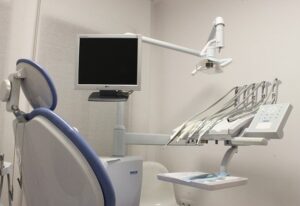How often should you see a Dentist?

Earlier, around the 1990s and in the late 20th century, experts advised people to visit a dentist or orthodontist once a year. Later, the ADA (American Dental Association) modified the frequency from once a year to once every six months. And now in 2025, what is the case? Will the industry experts recommend visiting a dentist every three or four months?
Certainly, with the rising infections and diseases on one side and medical advancements on the other, experts emphasize individuality more. In other words, there is no one common timeline or constant frequency that matches everyone’s use cases and scenarios. It varies greatly as multiple factors contribute to the decisions.
Moreover, there were some common misconceptions, like people must visit a dentist only if there is an underlying dental problem. But the hard truth is that dental treatments are different from regular checkups. So, to overcome these kinds of misconceptions and false information as to how often you visit a dentist, first, understand why dental visits are important. Second, explore what factors influence, and third, get personalized consultation for regular visits.
Why are dental visits important?
According to the ADA, the official United States Medicaid program reports that almost $1,000 is being spent for every emergency dental visit, and more than 2 million such cases are being recorded. Of course, a regular dental visit in the country costs way less than these emergency visits.
In addition, as per the latest report by the U.S. Centers for Disease Control and Prevention, the country loses more than forty-five billion USD every year owing to people suffering from untreated oral problems. This clearly explains why regular dental visits are important and how significantly they can save costs for the country and increase people’s productivity.
Benefits of regular dental visits
By visiting a dentist at constant intervals, individuals can enjoy a lot of benefits and stay ahead of the curve with regard to dental problems or diseases. Every regular dental checkup involves examining the mouth for infections, if any, deep cleaning the teeth and gums, detecting or diagnosing any serious dental problems, and most importantly, screening for oral cancer. In addition, the individual gets personalized tips and guidelines on how to improve their overall oral hygiene.
Factors influencing how often you must see your dentist
- Age group
Yes, age groups matter, and each one of you needs to check which category you belong to and follow the respective minimum recommendations by dentists.
For instance, children under 18 years and seniors above 60 or 65 years are recommended to have frequent dental visits as they are more prone to infections. On the other hand, adults between the ages of 18 and 60, who mainly fall under the working age group, can visit the dentist comparatively less.
- Oral hygiene
Oral hygiene is a priority for every individual. It plays a vital role in preventing infectious oral diseases. Habits like regular brushing and flossing ensure good oral hygiene. Not only do they prevent oral diseases, but they also help prevent any complications, improve overall physical health (as digestion starts from the mouth), and save you a lot of time, money, and effort.
So, if your oral hygiene is great, you can visit the dentist once or twice a year. Otherwise, you ought to visit the dentist at least three to four times a year for deep cleaning and other examinations.
- Dental history
The history of every individual concerning his or her previous dental problems is crucial to determining how frequently the individual needs to undergo regular dental checkups. People with existing oral diseases or those with a long history of dental problems cannot take chances and must consult the orthodontist multiple times a year to constantly check for further dental infections or diseases. These visits are in addition to their regular treatment visits.
Contradictorily, people with less dental history can reduce the number of visits to one or two per year. However, the next time you visit the dentist, request the frequency of your regular checkups and visits.
- Treatments if any
As said previously, dental treatments are totally different from dental checkups. In general, dental treatments are one-time, involving two or more sessions. However, regular checkups are constant and recurring every year. Further, treatments involve consultation only concerning the underlying dental problem, like a decayed tooth. It does not include other examinations or deep cleaning, and this is all performed only during checkups.
- Others
Besides the above-said factors, there could be other factors, like pregnancy or diabetes, that may affect or have a higher probability of affecting your oral health and thus can highly influence the number of times you need to visit the dentist. So, first, share your medical history with your dentist and understand whether or not it can affect your oral health.
At the top of all this is your individuality. There is no one size that fits everyone. Each one’s dental visits are different from others owing to differences in the quality of the above factors.
Personalized oral consultation is the only solution.
Yes, personalized consultations and recommendations are better as each one’s history, quality of oral hygiene, and dental problems vary from one another. For example, if you’re living in Arnold, MO, get an appointment from any of the leading dentist in Arnold or reach out to your family orthodontist to get your oral health examined. Accordingly, the dentist can come up with the right frequency or interval between your regular dental checkups.
Conclusion
Irrespective of dental pain, flaws, or treatments, consult your family dentist and get regular appointments to ensure overall oral hygiene and prevent dental problems. Above all, prevention is better than a cure. However, in the worst case, if not multiple times, at least visit your dentist twice a year, as it gets covered under dental insurance for most of you and incurs no additional cost to you.






